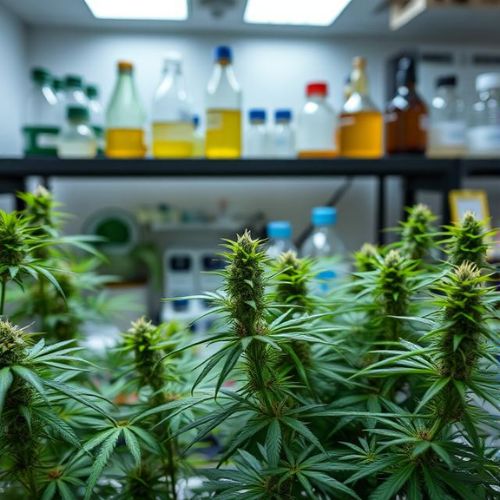Introduction
CBD for dogs has exploded in popularity and with good reason. From pain and anxiety relief to supporting joint health, cannabidiol (CBD) offers many potential benefits for your furry friend. But have you ever stopped to wonder how CBD for dogs is actually made?
Understanding the process behind your pet’s CBD products helps you make smarter, safer purchasing decisions. Let’s take a behind-the-scenes look at how CBD oil and treats for dogs are made, step by step.
Sourcing and Growing Hemp
The journey begins with hemp, not marijuana. In Canada, CBD for pets must be derived from industrial hemp plants containing less than 0.3% THC.
High-quality CBD starts with high-quality hemp. Reputable producers source hemp grown under regulated conditions, free from pesticides, heavy metals, and other harmful substances.
- Organic farming practices are preferred
- The strain of hemp matters—some are bred specifically for high CBD and low THC
- Climate, soil quality, and cultivation techniques all impact the quality of the final product
Harvesting and Drying the Hemp Plant
Once mature, the hemp plants are harvested. Farmers cut down the stalks and hang them to dry in temperature-controlled facilities.
Drying removes moisture to prevent mold and degradation and prepares the plant for efficient CBD extraction. The dried hemp flowers contain the highest concentration of cannabinoids, which is where most of the CBD comes from.
CBD Extraction
This is one of the most important stages in the process. The goal here is to separate CBD (and other beneficial compounds) from the plant material.
Common Extraction Methods
- CO₂ Extraction: Considered the gold standard. It uses pressurized carbon dioxide to pull cannabinoids from the plant. It’s clean, solvent-free, and preserves CBD purity.
- Ethanol Extraction: A food-grade alcohol is used to strip cannabinoids. It’s cheaper but may also extract chlorophyll, affecting taste and quality.
- Hydrocarbon Extraction: Uses butane or propane. Not ideal for pet products due to potential residue.
The result is a crude CBD oil full of cannabinoids, terpenes, and sometimes waxes or chlorophyll, depending on the method.
Winterization and Filtration
To improve purity and consistency, the crude extract often goes through winterization, where it’s mixed with ethanol and frozen.
This removes unwanted fats, waxes, and plant materials. The oil is then filtered to leave behind a clean CBD concentrate.
This step is especially important for CBD oil products used in pets, as it helps eliminate impurities that may upset their stomach or cause side effects.
Distillation and Isolation
Depending on the product type, manufacturers may further refine the extract into:
- Full-spectrum CBD (contains all cannabinoids, including trace THC)
- Broad-spectrum CBD (THC-free, but includes other cannabinoids and terpenes)
- CBD isolate (pure cannabidiol)
CBD isolate is often used in pet products to ensure zero THC content, which is crucial for dogs’ safety.
Formulation Into Dog-Friendly Products
Once the CBD extract is ready, it’s blended with carrier oils like MCT oil, salmon oil, or hemp seed oil to create tinctures, or infused into treats, chews, and capsules.
Pet-Specific Formulation Considerations
- Flavoring (chicken, beef, or bacon) to make it more appealing
- Dosage accuracy suited to a dog’s weight and size
- No xylitol, chocolate, or harmful additives
This stage ensures the product is palatable, safe, and effective for dogs.
Lab Testing for Quality and Safety
Reputable companies test every batch of CBD products through third-party labs. This step is crucial to confirm:
- CBD potency (what’s on the label is what’s inside)
- THC levels (should be near 0%)
- Absence of heavy metals, pesticides, solvents, and microbes
Look for a Certificate of Analysis (COA) from an independent lab. This is the gold standard for transparency and trust in the CBD industry.
Packaging and Labeling
CBD products for dogs are then bottled or packaged with clear labeling, often including:
- CBD amount per serving
- Ingredients
- Recommended dosage
- Batch number for traceability
- Expiry date and storage instructions
Bonus points for brands that also provide QR codes to access their COAs.
Final Thoughts
From the farm to your dog’s food bowl, the CBD manufacturing process is extensive—but every step matters. Knowing how CBD for dogs is made empowers you to:
- Choose safe, effective products
- Spot red flags (e.g., no lab testing or vague ingredient lists)
- Understand what goes into your pup’s wellness routine
Always buy from Canadian brands that are transparent about their process, source organic hemp, and provide third-party lab results.


